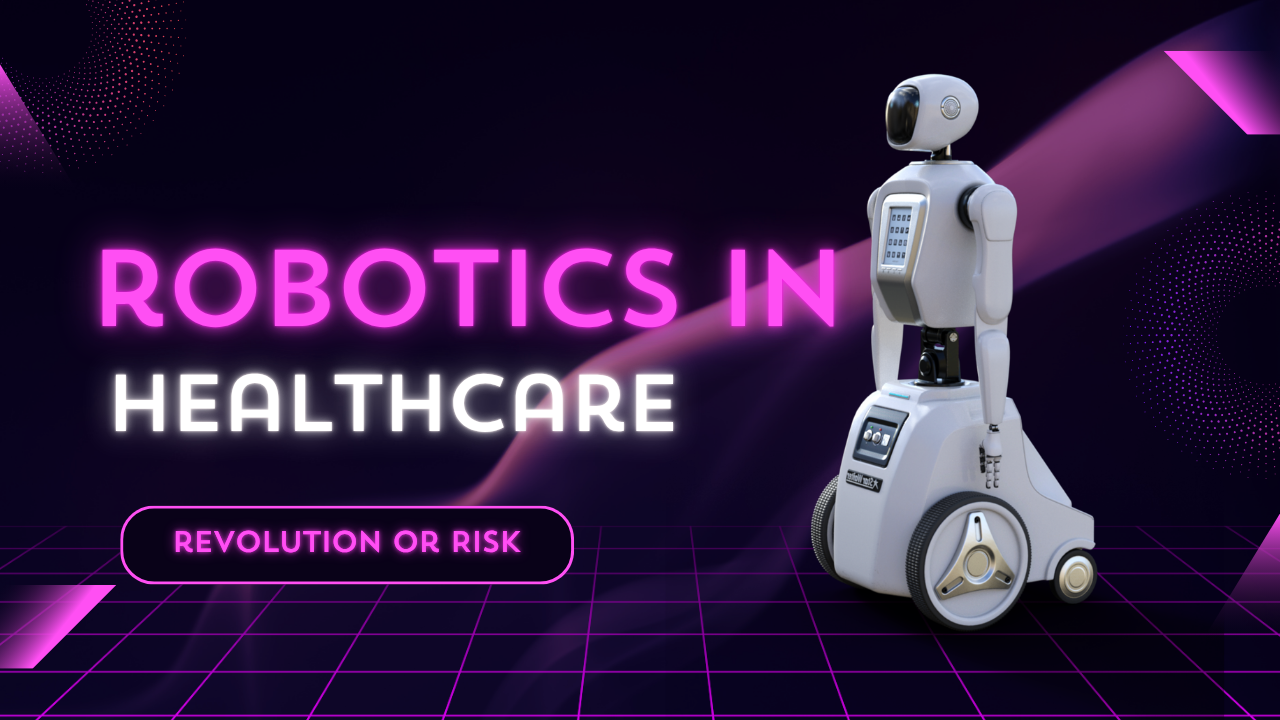Robots are leading the way in the digital evolution of the medical sector. More and more people are using robots in modern medical care. They provide people medicine, help with surgery, and even keep them company. These technologies make people very worried about safety, ethics, and dependency on technology, but they also have the potential to make patient care, efficiency, and accuracy better.
So, is it new to employ robots in healthcare, or may it be dangerous? Let’s look at this high-tech development from every viewpoint.
More and more robots are being used in the Healthcare. Robotics in healthcare is the use of robots to help with a wide range of medical procedures, such as surgeries, diagnostics, rehabilitation, and administrative tasks. These technologies can be put into a few main groups:
- Surgical robots: making complicated procedures more accurate
- Rehabilitation robots help people move about and do physical treatment.
- Service robots do things like clean rooms and provide people their medicine.
- Social robots: Helping with mental health and making friends
- Robots that use AI to look at medical data and pictures and make diagnoses
The expanding usage of robots in healthcare is due to an aging population, rising healthcare needs, a lack of staff, and the need for less invasive and more accurate treatment procedures.
Using robots in healthcare to make surgery more precise
Robots are most famous for their use in surgery.
Robotic surgical instruments like the da Vinci Surgical System have made it possible for surgeons to do minimally invasive surgery with more accuracy than ever before.
Some of the benefits are:
Less scarring and smaller cuts
Less blood loss
Stays in the hospital are shorter.
Less time to get better
These changes help patients, and they might also save healthcare providers money.
Perform that is more valuable and fruitful
Robots can do simple things like provide supplies, clean up rooms, and help with lab work. This gives medical workers more time to care for patients.
For example, during the COVID-19 epidemic, hospitals deployed robots that could work on their own to do telepresence consultations and cleaning, which lowered the danger of employees getting sick.
Easier access to care
Telemedicine robots can bring medical knowledge to areas where there aren’t enough doctors. Doctors can talk to patients who live far away using mobile robots that have cameras and screens.
Going to see patients often
Robots with sensors can keep an eye on important parameters and let workers know when there is a problem. This could save lives by helping doctors find problems early and treat them quickly.
Risks and moral problems
There are a number of big problems that need to be fixed, even while the benefits are clear.
- Costly and hard to get to Robotic systems that are more advanced cost a lot of money. This technology might be too expensive for smaller hospitals and developing countries, which could make it harder for people to get sophisticated care.
- Problems with technology and dependability
Robots can make mistakes and not work right. A problem with the equipment or software during surgery could be deadly. In the actual world, robotic surgery has sometimes failed because of technical problems or mistakes made by people. This shows how important it is to have people in charge. - We’re losing the human touch
One of the most talked-about worries is that robotic healthcare could make people less likely to interact with each other. To heal, you need to be able to feel empathy, compassion, and trust. But can machines learn these things? Patients, especially older people or those with mental health concerns, may feel alone or less human when robots do most of the labor. - Keeping data safe and private
Robots that collect, analyze, and store medical data must be safe from cyber threats. If someone breaks into a database, they could break regulations that safeguard privacy, including HIPAA, and put confidential medical information at risk. - Getting fired
People are worried that automation could lead to job losses in support, administrative, and even clinical domains, even though robots are not meant to take the place of doctors and nurses.
Finding the right balance
A fair and balanced strategy is needed to get the most out of robots while minimizing hazards. Here are the steps for a responsible adoption:
- Full training programs for people who work in health care.
- Strict rules to protect computers and information Rules for robotic systems Instead of getting rid of robots, work with them.
- When making technology, developers and doctors need to think about how it will affect people.
This will make sure that robots help with human care instead of hurting it.
Final thoughts
Robotics is definitely revolutionizing the healthcare business because it makes things much more accurate, faster, and available. These technologies are making the medical industry better in various ways, from complicated operations to automated patient care. But with fresh ideas comes a duty. To make sure that robotics improves care instead of making it worse, the technological, moral, and social risks that come with it must be properly addressed. The goal should be to make a healthcare system where people and machines function well together and each one adds to the other’s talents. The future of robotics in healthcare is about finding a balance between revolution and risk. This may be done with careful planning and a focus on patient-centered care.

